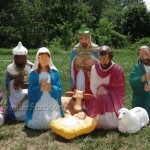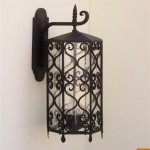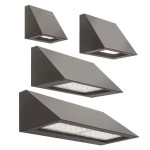Essential Aspects of Outdoor Lighting Wiring Requirements
Outdoor lighting not only enhances the aesthetic appeal of your property but also promotes safety and security. Proper wiring is crucial to ensure the safe and efficient operation of your outdoor lighting system. Here are some essential aspects of outdoor lighting wiring requirements that you need to be aware of:
1. Use Outdoor-Rated Wire: Outdoor wiring is exposed to harsh weather conditions such as rain, sunlight, and temperature fluctuations. Therefore, it's essential to use outdoor-rated wire that is specifically designed to withstand these elements. Outdoor-rated wire is resistant to moisture and UV radiation, ensuring it can maintain its integrity and performance over time.
2. Choose the Right Wire Size: The thickness of the wire determines its current-carrying capacity. For outdoor lighting, you'll need to select the appropriate wire size based on the power consumption of your lights. Using undersized wire can lead to excessive heating and potential fire hazards, while oversized wire is unnecessarily expensive.
3. Install Conduit: Conduit is a protective casing that encloses the electrical wires. It protects the wires from physical damage, moisture, and environmental factors. Conduit is typically made from PVC or metal and is buried underground or run along walls and ceilings to provide both protection and a neat appearance.
4. Use Ground Fault Circuit Interrupters (GFCIs): GFCIs are essential safety devices that protect against electrical shocks. They are mandatory for outdoor lighting circuits and should be installed near water sources or areas where moisture is present. GFCIs quickly detect any imbalances in the electrical current and automatically shut off the power to prevent accidental shocks.
5. Proper Wire Connections: Secure and proper wire connections are vital for a reliable lighting system. Use wire nuts or other approved connectors to join wires, ensuring they are tightly fastened to prevent arcing or overheating. Insulation tape can be used to provide additional protection and prevent any exposed wires from touching. Improper connections can lead to electrical problems and potential hazards.
6. Test and Inspect: Once the wiring is complete, thoroughly test the lighting system to ensure it is functioning correctly. Turn on all the lights and check for any flickering, dimming, or other irregularities. Regularly inspect your outdoor lighting system for any signs of damage or wear, and address any issues promptly. This will maintain the safety and efficiency of your outdoor lighting.
By following these essential aspects of outdoor lighting wiring requirements, you can create a safe and visually appealing lighting system for your property. Remember, it's always advisable to consult with a qualified electrician if you have any doubts or require professional assistance with outdoor lighting wiring.

Wiring Installation Coastal Source

How To Install Low Voltage Outdoor Landscape Lighting The Garden Glove

How To Install Low Voltage Outdoor Deck Lighting

Installation Help For Outdoor Lighting

What Size Landscape Lighting Transformer To Use Power Your Design Garden Light Led

Outdoor Low Voltage Lighting Diy Family Handyman

Make Your Backyard Badass With Led Lighting The Art Of Doing Stuff

What Size Landscape Lighting Transformer To Use Power Your Design Garden Light Led

How To Wire Outdoor Low Voltage Lighting Part 2

Outdoor Lighting How To Design A Garden Scheme Pt Iii
Related Posts







